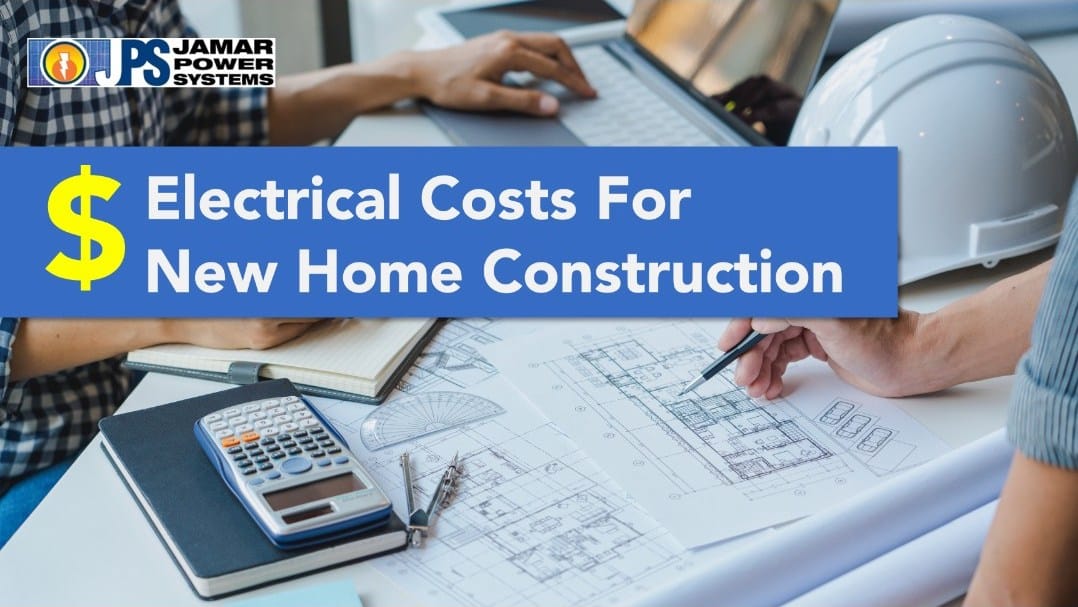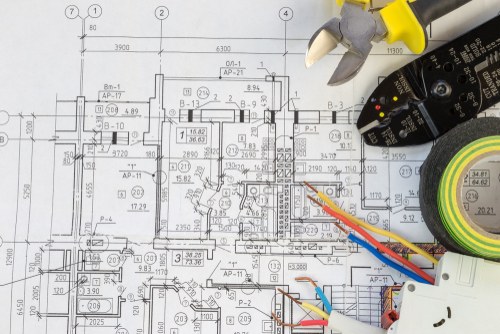New Home Construction Electrical Costs
Building a new home is an exciting and rewarding experience. It allows you to design a living space that fits your style, needs, and budget. However, the new home construction process can also be overwhelming and complex, with many factors to consider, including electrical costs.
Electrical systems are an essential component of any new home. Still, they can also be a significant expense, with cost estimates ranging from several thousand dollars to tens of thousands of dollars, depending on the project’s size, type, location, and complexity.
In this article, we will explore the factors that influence electrical costs in new home construction and provide guidance on planning and budgeting for a cost-effective and high-quality electrical system.
Electrical Systems In New Homes
The electrical system is an essential component of any new home construction project. It provides power to all the lights, appliances, and devices that make a home comfortable and functional.
A well-designed and installed electrical system ensures home safety, reliability, and efficiency while meeting national, state, and local electrical codes and regulations.
Here are the major components of an electrical system in a new home:
Service entrance: The service entrance is where the electrical system connects to the utility grid. It typically consists of a weatherhead, a meter socket, and a cable, conduit, or raceway that runs from the utility pole or underground to the main electrical panel in the home.
The service entrance must be sized and installed correctly to match the home’s electrical load and comply with code requirements.
Main electrical panel: The main electrical panel, also known as the distribution panel or circuit breaker panel, is the central hub of the electrical system.
It houses the main circuit breaker or disconnect switch, which controls the flow of electricity from the utility to the home, as well as a series of individual circuit breakers or fuses that control the power to specific circuits and outlets throughout the home.
The main panel must be sized and configured properly to meet the home’s electrical demands and ensure safety and performance.
Wiring:
Wiring is the network of conductors that connects the electrical devices and fixtures in the home to the main panel. It includes various cables, wires, conduits, and connectors selected based on each circuit’s size, length, insulation, and environment.
Wiring must be installed and maintained carefully to prevent electrical hazards such as short circuits, overloads, or grounding faults.
Devices: Devices refer to the electrical outlets, switches, receptacles, fixtures, and other equipment in the home.
They come in various types, styles, and configurations, from standard wall outlets to USB charging ports, dimmer switches, and motion sensors.
Devices must be installed and wired correctly for safety, convenience, and functionality.
Lighting:
Lighting is a critical element of any new home construction project for practical and aesthetic purposes. It includes various types of fixtures, bulbs, drivers, and controls designed to illuminate different areas and settings of the home.
Lighting design must consider factors such as light level, color temperature, CRI, energy efficiency, aesthetics, comfort, and mood.
These five components are the core of any new home construction project electrical system.
They must be designed, installed, and maintained by qualified and licensed electrical contractors with the expertise and knowledge to meet the highest quality, safety, and performance standards.
Homeowners can enjoy peace of mind, comfort, and savings for years by investing in a reliable and efficient electrical system.
Factors That Influence The Electrical Cost Of New Home Construction
When estimating the cost of an electrical system for a new home construction project, several factors can significantly impact the final price.
Here are some of the key factors that homeowners and electrical contractors should consider:
Size: The electrical system needed to power a new home depends on the number of rooms, square footage, and power requirements of appliances and devices.
Generally, larger homes with more gadgets and amenities will require larger and more complex electrical systems, resulting in higher electrical costs.
Type: The type of electrical system chosen for a new home can also impact the cost.
For example, a traditional wired system may be less expensive than a wireless or smart-home system. Still, the latter will offer more features and convenience.
Location: The new home’s location can also influence the electrical cost, as local codes and regulations may require additional safety measures or equipment.
Code requirements: Electrical installations for new homes must meet certain safety and performance standards set by national, state, and local building codes.
These codes may vary depending on the home’s location, size, and use. Failure to comply with code requirements can result in costly penalties, fines, or repairs.
Upgrades: Finally, homeowners may want to add optional upgrades to their electrical system, such as backup generators, solar panels, energy-efficient lighting, or smart-home features.
While these upgrades can offer long-term cost savings or comfort benefits, they can also increase the project’s initial cost.
Pricing Models For Electrical Services
When it comes to pricing electrical services for new home construction projects, electrical contractors use several common models to estimate the cost of their work.
Each model has its advantages and disadvantages, and the choice of model depends on factors such as the electrical work’s complexity, variability, and predictability.
Here are some of the main pricing models used by electrical contractors:
Hourly Rate: The hourly rate model charges customers based on the number of hours spent on the job.
This model is suitable for smaller or simpler electrical tasks that can be completed within a few hours or for clients who prefer to pay for work as it is performed.
However, hourly rates can be unpredictable, resulting in higher costs if the work takes longer than expected.
Fixed price: The fixed price model offers a flat fee for a specific scope of work, regardless of how long it takes to complete.
This model is useful for well-defined electrical projects with predictable outcomes, such as rewiring a room or installing a new panel board.
Fixed prices provide customers with a clear and upfront cost estimate. Still, they may not cover unforeseen issues or changes in scope.
Unit price: The unit price model charges customers based on a predefined unit of measurement, such as per fixture, per outlet, or per foot of wire.
This model is suitable for larger electrical projects with a high level of variability, where the exact amount of work cannot be predicted in advance.
Unit prices can be adjusted based on the complexity or difficulty of the work. Still, there may be more cost-effective models for small or simple jobs.
Lump sum or flat rate: The lump sum model provides customers with a single all-inclusive price for all the electrical work required in a new home construction project.
This model is suitable for comprehensive electrical projects with multiple components, where it may be difficult to estimate the individual cost of each component.
Lump sums offer customers a complete picture of the project’s cost upfront. Still, they may not allow for flexibility or adjustments throughout the project.
Each pricing model has its tradeoffs in terms of cost, transparency, flexibility, and risk allocation.
It’s important for electrical contractors to communicate clearly with clients about the pricing model used and to provide accurate and detailed cost estimates to avoid any surprises or disputes.
Electrical contractors can help ensure a smooth process by working collaboratively with their clients.
Choosing An Electrician To Wire Your New Build House
When wiring a new build house, it’s critical to have experienced professionals to get the job done correctly.
Electrical work is a complicated and potentially dangerous process, meaning it’s critical to work with an electrician who is properly licensed and insured.
Here are some guidelines homeowners should consider when choosing an electrician to wire their new build house:
Licensing and Insurance: Hiring a licensed and insured electrician is essential. A licensed electrician has undergone extensive training and passed exams to guarantee that they have the knowledge and skills necessary to safely and properly perform electrical work. An insured electrician protects the homeowner in case an accident or injury occurs on the job site.
Experience: Experience is key when choosing an electrician. It’s prudent to work with an experienced electrician who has a proven track record of wiring new build houses. A reliable and experienced electrician will provide high-quality work and offer guidance on the latest technologies available.
Portfolio: A good electrician will have a portfolio of their previous work. Past projects can give homeowners a glimpse into what kind of work and attention to detail they can expect. A portfolio can also provide inspiration and ideas for wiring the new build house.
Transparent Pricing: A transparent pricing structure is critical when working with an electrician. Homeowners should work with an electrician who is upfront about pricing, providing detailed estimates for each electrical system component. Knowing the project’s cost upfront and avoiding hidden charges will help homeowners budget accordingly.
Communication and Availability: Communication is key in any home construction project. Homeowners should select an electrician who is available, responsive, and capable of communicating clearly throughout the project cycle.
By considering these guidelines, homeowners can find an electrician who delivers outstanding work, adheres to strict codes and regulations, and can help to ensure that the electrical system in their new build house is safe, reliable, and, most importantly, functional from day one.
Key Takeaways:
Electrical systems in new homes contain several key components, including the service entrance, main electrical panel, wiring, devices, and lighting. Each component affects the cost of the overall system and must comply with national, state, and local codes and standards.
Factors influencing electrical cost in new home construction include size, type, location, code requirements, and upgrades. Homeowners and electrical contractors should work together to optimize each factor and minimize the cost without sacrificing quality.
Pricing models for electrical services in new home construction include the hourly rate, fixed price, unit price, and lump sum. Each model has its advantages and disadvantages, and the choice of model depends on the type and predictability of the electrical work.
Investing in a well-designed and well-executed electrical system is a smart choice for new homeowners. It offers long-term benefits regarding safety, reliability, efficiency, and comfort. It can help avoid costly issues and penalties in the future.
By following these recommendations and working with a licensed electrical contractor, homeowners can plan and execute a cost-effective, high-quality electrical system for their new home construction project.
Conclusion
In conclusion, the cost of an electrical system for a new home construction project depends on several key factors, including the size, type, location, code requirements, and upgrades.
Homeowners and electrical contractors should collaborate to estimate the cost of each electrical system component and choose the most appropriate pricing model based on the complexity and predictability of the work.
It’s important to remember that electrical cost is just one aspect of the overall cost of new home construction. Experience, quality, safety, and reliability should also be factors in decision-making.
Sources:
https://www.nahb.org/blog/2021/03/how-much-does-whole-home-electrification-cost/
https://www.energy.gov/energysaver/efficient-home-design
https://www.energy.ca.gov/rules-and-regulations/building-energy-efficiency
https://homeguide.com/costs/electrical-wiring-cost
https://howmuch.net/costs/electrical-wiring
https://www.thisoldhouse.com/electrical/reviews/electrician-cost
https://www.forbes.com/home-improvement/electrical/cost-to-rewire-a-house/
Since 1984 we have provided electrical services to homebuilders throughout San Diego County California.
We also provide solar energy systems and installation for homebuilders and homeowners.
Related Articles:
New Home Construction Electrical Costs
Solar Energy Systems for Home Builders
Electrical Services for New Home Builders
Electrical Requirements for ADUs in California
How Much Does It Cost To Build An ADU?
To speak with our experts, contact our office at (619) 448-7770 or fill out our web form here and we'll get in contact asap.
- How Solar Batteries Work - March 4, 2024
- Solar Battery or Generator for Emergency Backup Power? - January 30, 2024
- How to Check If Your Solar Panels Are Charging The Solar Battery - January 12, 2024









